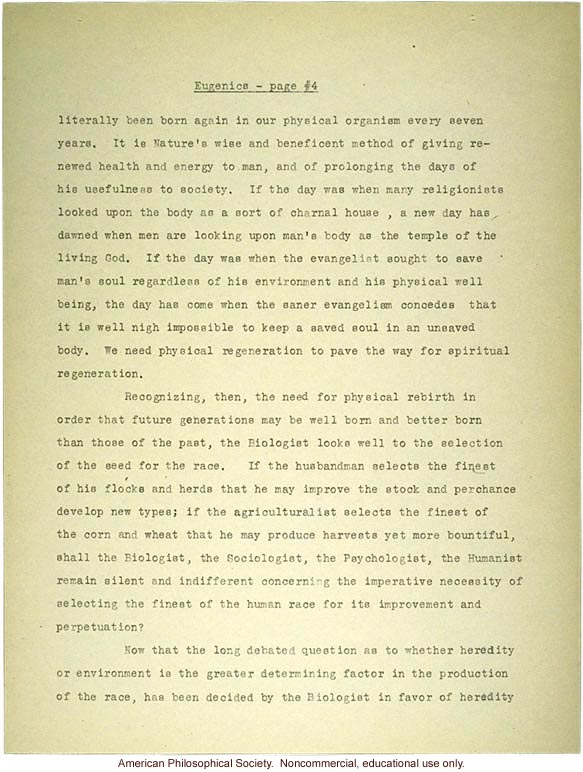[page heading] Eugenics - page #4 [end page heading]
literally been born again in our physical organism every seven years. It is Nature's wise and beneficent method of giving renewed health and energy to man, and of prolonging the days of his usefulness to society. If the day was when many religionists looked upon the body as a sort of charnal [sic] house, a new day has dawned when men are looking upon man's body as the temple of the living God. If the day was when the evangelist sought to save man's soul regardless of his environment and his physical well being, the day has come when the saner evangelism concedes that it is well nigh impossible to keep a saved soul in an unsaved body. We need physical regeneration to pave the way for spiritual regeneration.
Recognizing, then, the need for physical rebirth in order that future generations may be well born and better born than those of the past, the Biologist looks well to the selection of the seed for the race. If the husbandman selects the finest of his flocks and herds that he may improve the stock and perchance develop new types; if the agriculturalist selects the finest of the corn and wheat that he may produce harvests yet more bountiful, shall the Biologist, the Sociologist, the Psychologist, the Humanist remain silent and indifferent concerning the imperative necessity of selecting the finest of the human race for its improvement and perpetuation?
Now that the long debated question as to whether heredity or environment is the greater determining factor in the production of the race, has been decided by the Biologist in favor of heredity


